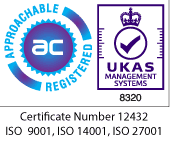How We Helped to Enhance Data Centre Infrastructure Through a Comprehensive Connectivity Study
Establishing additional connectivity paths to avoid network redundancy
We were approached by one of the fastest growing data centre providers in Europe. With over 20 data centres throughout the continent, they are consistently meeting the need for scalable, high-performance infrastructure.
Despite this, a key data centre in Scandinavia had become reliant on a single, non-redundant 1 Gbps internet service from a local provider, posing significant risks to operational continuity. To enhance the reliability of its network and resolve these risks, our client needed to establish additional connectivity paths to ensure the redundancy of its infrastructure.
Download the Full Case Study
Contact Form - Enhancing Data Centre Infrastructure Case Study
The
Ask
Cambridge Management Consulting was engaged to address these connectivity challenges by identifying and evaluating potential vendors and infrastructure options to create second and third connectivity paths. This involved exploring various types of connectivity, including internet access, point-to-point capacity, wavelengths, and dark fibre.
Additionally, Cambridge MC was asked to provide recommendations for building a local fibre network around the data centre to control and maintain diverse paths. This would allow the data centre to connect directly to nearby points of presence (PoPs) and reduce dependency on external providers, thereby enhancing network resilience and operational control.
The goal of this project was to ensure that the Nordic data centre could maintain continuous operations even in the event of a failure in the primary connection.
Approach & Skills
Cambridge MC approached the project with a focus on ensuring operational continuity and resilience for the data centre. By identifying multiple connectivity paths, we aimed to mitigate the risk of network failures and ensure that the data centre could maintain continuous operations even in the event of a failure in the primary connection. This approach allowed Cambridge MC to provide a comprehensive solution to address both immediate and long-term connectivity needs.
We employed a combination of Agile and Waterfall methodologies to manage the project. The initial investigative phase allowed a Waterfall approach, in which our team conducted thorough research and analysis to identify potential vendors and connectivity options. This phase involved detailed interviews with various telecommunications providers and an assessment of publicly available information.
Once the initial analysis was complete, the workflow transitioned to an Agile approach for the implementation phase. This allowed Cambridge MC to adapt to new information and feedback from stakeholders, ensuring that the final solution was both flexible and robust.
Challenges
- Lack of information: One of the primary obstacles we faced was the lack of detailed network maps and information from some of the potential vendors. To overcome this, the team conducted extensive interviews with contacts at these companies and leveraged its existing network of industry contacts to gather as much information as possible.
- Remote location: Another challenge was the remote location of the data centre, which limited the availability of local infrastructure and required us to explore creative solutions for connectivity. Cambridge MC addressed this by proposing the construction of a local fibre network around the data centre, which would allow for greater control and flexibility in connecting to nearby PoPs.
- Fragmented factors: Additionally, coordinating with multiple vendors and ensuring that their services could be integrated seamlessly posed a logistical challenge. We mitigated this by recommending a phased approach to implementation, starting with the most critical connectivity paths and gradually expanding to include additional options.
Outcomes & Results
1
Increased Connectivity:
Cambridge MC successfully identified and evaluated multiple connectivity paths for the data centre. By exploring various types of connectivity, including internet access, point-to-point capacity, wavelengths, and dark fibre, we provided a comprehensive solution that significantly enhanced network resilience and reliability.
2
Greater Control & Flexibility: Our recommendations for building a local fibre network around the data centre allowed for greater control and flexibility in connecting to nearby points of presence, ensuring continuous operations even in the event of a failure in the primary connection.
3
New Vendors: The team’s extensive network of industry contacts and deep understanding of the regional telecommunications landscape allowed for a thorough and nuanced evaluation of potential vendors and connectivity options.
4
Scope for Future Work: Cambridge MC identified several future developments with the potential to further enhance international connectivity and provide additional redundancy for the data centre. We also proposed further assistance, including a site visit for a more in-depth analysis of options, issuing RFI/RFP to vendors for capacity and fibre, and conducting similar connectivity studies for other candidate sites in the region.
Get in touch with our Data Centre Experts
Case Studies
Our team has had the privilege of partnering with a diverse array of clients, from burgeoning startups to FTSE 100
companies. Each case study reflects our commitment to delivering tailored solutions that drive real business results.
CASE STUDIES
A little bit about Cambridge MC
Cambridge Management Consulting is a specialist consultancy drawing on an extensive global network of over 200 senior executives in 22 countries.
Our purpose is to help our clients make a better impact on the world.
ABOUT CAMBRIDGE MC
Industry Insights










